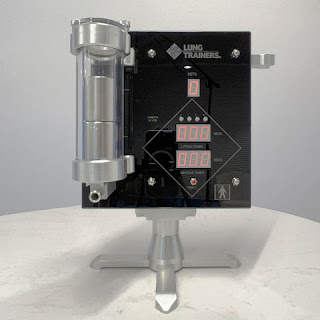Martial Artists' Breathing Training
There are numerous breathing exercises available. Some are basic and straightforward, while others take years to master. I'll go over the five I believe are the most helpful for martial artists who are just getting started with healthy breathing. To begin, we'll go over the two breathing techniques that are excellent for becoming aware of the body: Attention Breathing and Abdominal Breathing. The more complex exercises of Reverse Abdominal Breathing and Nose Panting will follow. Finally, The Complete Breath will be introduced, which is more difficult and demands more concentration and effort.
It's crucial to focus on breathing exercise machine via the nose during both inhalation and exhalation when doing these breathing exercises. Of course, breathing just through the nose is unrealistic when doing martial arts. It is physiologically impossible since the body's demand for oxygen exceeds the nose's ability to handle it. It is critical, however, to pay attention while performing these specialised exercises. Consider breathing in via the nose and out through the nose as a closed circuit within the body. When you open your lips, the circuit is broken, and the energy dissipates.
Breathing With Care
It is important to realize that people breathe differently. Children breathe mostly with their abdomens, while middle-aged people breathe primarily with their stomachs and older people primarily with their upper chests. However, other circumstances, such as emotions or illness, can influence how people breathe. When someone is excited, they breathe faster and shallower than when they are unhappy. A calm person will breathing trainer slowly and profoundly.

As the name says, attention breathing involves focusing your consciousness on the natural rhythm of your breath, not to control it but to just watch it as a physical function. Your awareness is the tool that allows you to transition from unconscious to conscious (or dynamic) breathing. This change can be achieved by focusing on the sensations of the body as it breathes. As the air enters your nostrils, notice how it feels. Follow it as it enters the lungs and take note of how far it penetrates. Keep your whole attention on the task at hand and return to it when you exhale. As the used air is released from the body, feel it.
As you become more conscious of how your breath feels, it should become smoother and more relaxed. During Attention Breathing, however, do not try to adjust your breathing. Your goal is to become aware of your unconscious breathing habits so that you can feel the difference when you begin dynamic breathing. Simply catch yourself and return to your breath whenever your mind wanders. Try to practise Attention Breathing for five minutes every day at the same moment, such as when you first wake up or when you are about to retire to bed. Once you've become used to it, try focusing on your breath at different times during the day.
Source Url :- https://sites.google.com/view/lungtrainersocom/home

Comments
Post a Comment